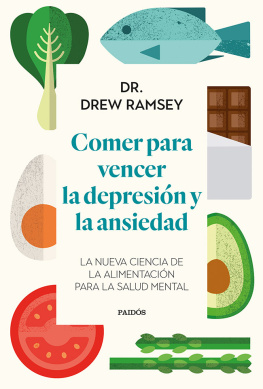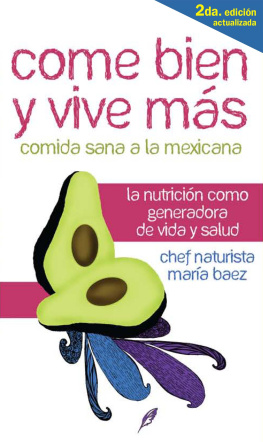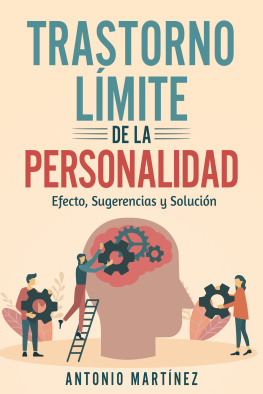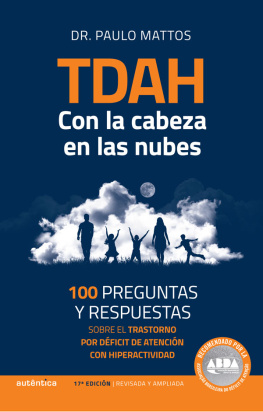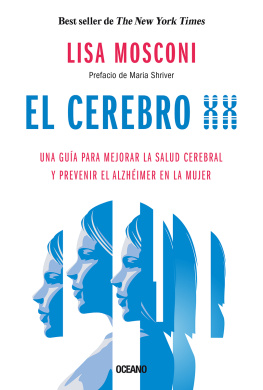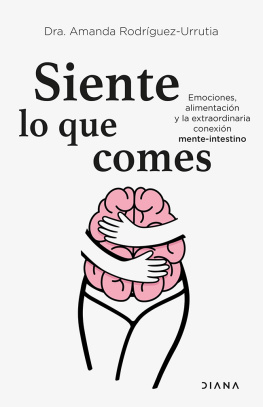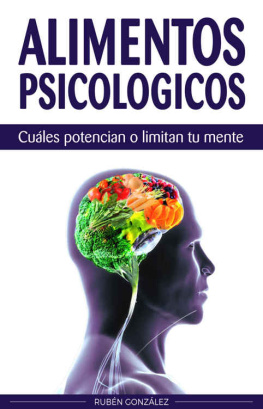
Notas
Capítulo 1
El romance entre el intestino y el cerebro
. Si quieres aprender más sobre cómo se consideraba a la salud mental antes de 1800, recomiendo leer Historia de la locura en la época clásica (Nueva York, Vintage, 1988), de Michel Foucault.
. Miller, I. “The gut-brain axis: historical reflections”, Microbial Ecology in Health and Disease, vol. 29, núm. 2, 2018, p. 1542921.
. Idem.
. Carabotti, M., A. Scirocco, M. A. Maselli y C. Severi, “The gut-brain axis: interactions between enteric microbiota, central and enteric nervous systems”, Annals of Gastroenterology, vol. 28, núm. 2, 2015,
pp. 203-209.
. Simren, M., G. Barbara, H. J. Flint et al., “Intestinal microbiota in functional bowel disorders: a Rome foundation report”, Gut, vol. 62, núm. 1, 2012, pp. 159-176.
. Giau, V., S. Wu, A. Jamerlan et al., “Gut microbiota and their neuroinflammatory implications in Alzheimer’s disease”, Nutrients, vol. 10, núm. 11, 2018, p. 1765; Shishov, V. A., T. A. Kirovskaia, V. S. Kudrin y A. V. Oleskin, “Amine neuromediators, their precursors, and oxidation products in the culture of Escherichia coli K-12” [en ruso], Prikladnaia Biokhimiia i Mikrobiologiia, vol. 45, núm. 5, 2009, pp. 550-554.
. Galley, J. D., M. C. Nelson, Z. Yu et al., “Exposure to a social stressor disrupts the community structure of the colonic mucosa-associated microbiota”, BMC Microbiology, vol. 14, núm. 1, 2014, p. 189.
. Valles-Colomer, M., G. Falony, Y. Darzi et al., “The neuroactive potential of the human gut microbiota in quality of life and depression”, Nature Microbiology, vol. 4, núm. 4, 2019, pp. 623-632.
. Ercolini, D. y V. Fogliano, “Food design to feed the human gut microbiota”, Journal of Agricultural and Food Chemistry, vol. 66, núm. 15, 2018, pp. 3754-3758.
. “New State Rankings Shines Light on Mental Health Crisis, Show Differences in Blue, Red States”, Mental Health America, 18 de octubre de 2016. Consultado el 29 de septiembre de 2019 en https://www.mha
national.org/new-state-rankings-shines-light-mental-health-crisis
show-differences-blue-red-states.
. “Mental health and mental disorders”, HealthyPeople.gov. Consultado el 29 de septiembre de 2019 en https://www.healthypeople.gov/2020/
topics-objectives/topic/mental-health-and-mental-disorders.
. Liang, S., X. Wu y F. Jin, “Gut-brain psychology: rethinking psychology from the microbiota-gut-brain axis”, Frontiers in Integrative Neuroscience, vol. 12, 2018.
. Sarris, J., A. C. Logan, T. N. Akbaraly et al., “Nutritional medicine as mainstream in psychiatry”, Lancet Psychiatry, vol. 2, núm. 3, 2015,
pp. 271-274.
Capítulo 2
Depresión: probióticos, omega-3 y el patrón de alimentación mediterráneo
. Lazarevich, I., M. E. Irigoyen Camacho, M. C. Velázquez Alva et al.,
“Depression and food consumption in Mexican college students”, Nutrición Hospitalaria, vol. 35, núm. 3, 2018, pp. 620-626.
. Rao, T. S., M. R. Asha, B. N. Ramesh y K. S. Rao, “Understanding nutrition, depression and mental illnesses”, Indian Journal of Psychiatry, vol. 50, núm. 2, 2008, pp. 77-82.
. Cheung, S. G., A. R. Goldenthal, A. C. Uhlemann et al., “Systematic review of gut microbiota and major depression”, Frontiers in Psychiatry, vol. 10, 2019, p. 34.
. Messaoudi, M., R. Lalonde, N. Violle et al., “Assessment of psychotropic-like properties of a probiotic formulation (Lactobacillus helveticus R0052 and Bifidobacterium longum R0175) in rats and human subjects”, British Journal of Nutrition, vol. 105, núm. 5, 2010, pp. 755-764.
. Clapp, M., N. Aurora, L. Herrera et al., “Gut microbiota’s effect on mental health: the gut-brain axis”, Clinical Practice, vol. 7, núm. 4, 2017, p. 987.
. Francis, H. M., R. J. Stevenson, J. R. Chambers et al., “A brief diet intervention can reduce symptoms of depression in young adults—a randomized controlled trial”, PLoS One, vol. 14, núm. 10, 2019, p. e0222768.
. Westover, A. N., y L. B. Marangell, “A cross-national relationship between sugar consumption and major depression?”, Depression and Anxiety, vol. 16, 2002, pp. 118-120.
. Hu, D., L. Cheng y W. Jiang, “Sugar-sweetened beverages consumption and the risk of depression: a meta-analysis of observational studies”, Journal of Affective Disorders, vol. 245, 2019, pp. 348-355.
. Marosi, K., y M. P. Mattson, “BDNF mediates adaptive brain and body responses to energetic challenges”, Trends in Endocrinology and Metabolism, vol. 25, núm. 2, 2014, pp. 89-98.
. Aydemir, C., E. S. Yalcin, S. Aksaray et al., “Brain-derived neurotrophic factor (BDNF) changes in the serum of depressed women”, Progress in Neuro-Psychopharmacology and Biological Psychiatry, vol. 30, núm. 7, 2006, pp. 1256-1260.
. Arumugam, V., V. John, N. Augustine et al., “The impact of antidepressant treatment on brain-derived neurotrophic factor level: an evidence-based approach through systematic review and meta-analysis”, Indian Journal of Pharmacology, vol. 49, núm. 3, 2017, p. 236.
. Sánchez Villegas, A., I. Zazpe, S. Santiago et al., “Added sugars and sugar-sweetened beverage consumption, dietary carbohydrate index and depression risk in the Seguimiento Universidad de Navarra (SUN) Project”, British Journal of Nutrition, vol. 119, núm. 2, 2017, pp. 211-221.
. Gangwisch, J. E., L. Hale, L. García et al., “High glycemic index diet as a risk factor for depression: analyses from the Women’s Health Initiative”, American Journal of Clinical Nutrition, vol. 102, núm. 2, 2015, pp. 454-463; Salari Moghaddam, A., P. Saneei, B. Larijani y A. Esmaillzadeh, “Glycemic index, glycemic load, and depression: a systematic review and meta-analysis”, European Journal of Clinical Nutrition, vol. 73, núm. 3, 2018, pp. 356-365.
. Guo, X., Y. Park, N. D. Freedman et al., “Sweetened beverages, coffee, and tea and depression risk among older US adults”, Matsuoka, Y. (ed.), PLoS One, vol. 9, núm. 4, 2014, p. e94715.
. Whitehouse, C. R., J. Boullata y L. A. McCauley, “The potential toxicity of artificial sweeteners”, AAOHN Journal, vol. 56, núm. 6, 2008, pp. 251-259; cuestionario, 260-261; Humphries, P., E. Pretorius y H. Naude, “Direct and indirect cellular effects of aspartame on the brain”, European Journal of Clinical Nutrition, vol. 62, núm. 4, 2007, pp. 451-462.
. Choudhary, A. K., e Y. Y. Lee, “Neurophysiological symptoms and aspartame: what is the connection?”, Nutritional Neuroscience, vol. 21, núm. 5, 2017, pp. 306-316.
. Lobo, V., A. Patil, A. Phatak y N. Chandra, “Free radicals, antioxidants and functional foods: impact on human health”, Pharmacognosy Reviews, vol. 4, núm. 8, 2010, p. 118.
. Rodríguez Palacios, A., A. Harding, P. Menghini et al., “The artificial sweetener Splenda promotes gut proteobacteria, dysbiosis, and myeloperoxidase reactivity in Crohn’s disease-like ileitis”, Inflammatory Bowel Diseases, vol. 24, núm. 5, 2018, pp. 1005-1020; Jiang, H., Z. Ling,
Y. Zhang et al., “Altered fecal microbiota composition in patients with major depressive disorder”, Brain, Behavior, and Immunity, vol. 48, 2015, pp. 186-194.
. Vaccarino, V., M. L. Brennan, A. H. Miller et al., “Association of major depressive disorder with serum myeloperoxidase and other markers of inflammation: a twin study”, Biological Psychiatry
Página siguiente



